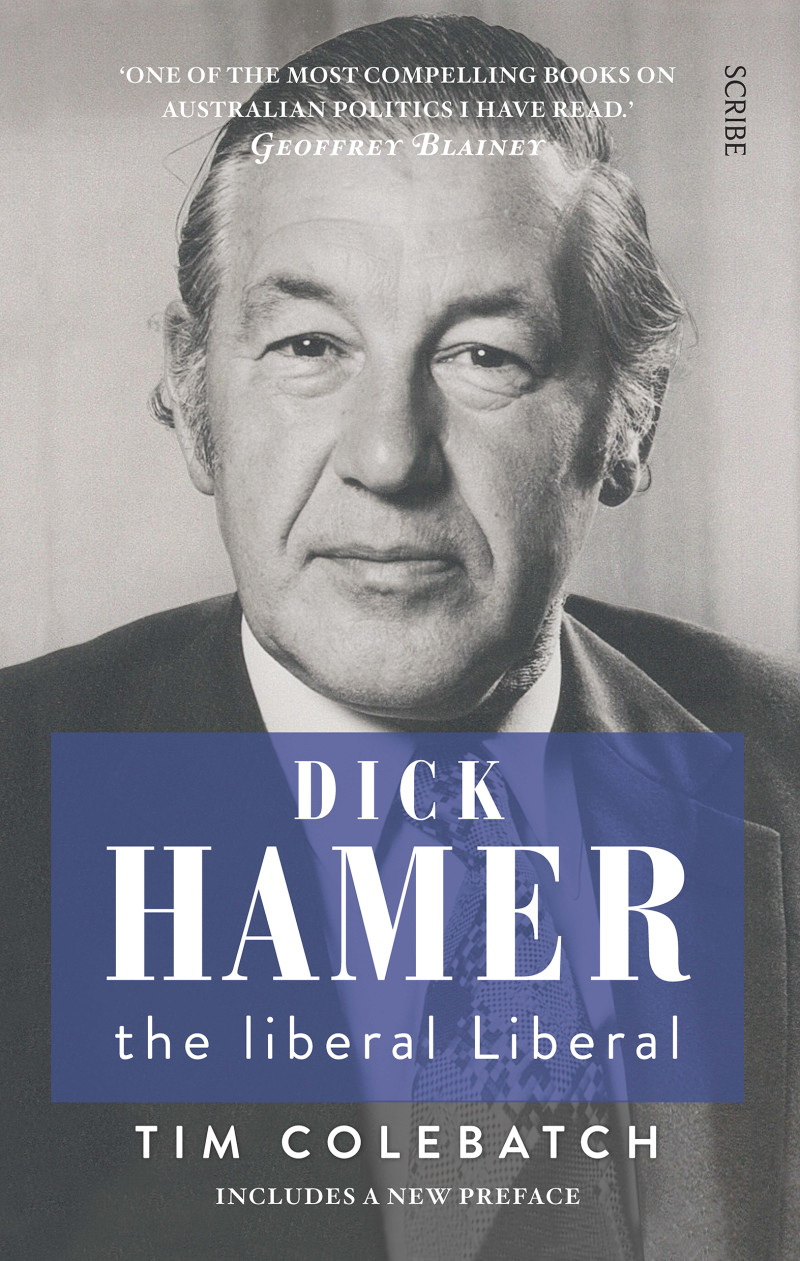Book review: Dick Hamer, the liberal Liberal
Tim Colebatch’s biography of one of Victoria’s most-loved Premiers.
Rupert Hamer was to Victorian state politics what Gough Whitlam was to the federal sphere; he transformed the state from a conservative backwards-thinking society to something that was significantly more progressive, inclusive and cultured. The only difference is that Gough Whitlam lead the Australian Labor Party (ALP) to office after a quarter-century of staunchly conservative Liberal and County Party rule whereas Rupert Hamer overturned the legacy of the Bolte era from within the same Liberal Party.

I am (barely) too young to have lived through the Hamer era, but the legacy of the man affectionately known as ‘Dick’ has been felt profoundly by my generation. Hamer was a reformer who changed Victoria forever. Amongst his many achievements are the construction of the Victorian Arts Centre and the City Loop underground railway, the establishment of numerous national parks and reserves, the decriminalisation of homosexuality, heritage protection for historic buildings, the end to capital punishment and significant support for the arts. Hamer outlawed sexual discrimination in the workplace and made a significant attempt to enable women to achieve leadership roles in the state.
Hamer inherited a state that had been governed by the Liberal Party for 17 years under Henry Bolte. During that time, Bolte had worked hard to build up the state education system but was otherwise disinterested in matters of social equality, the arts or public transport. Bolte was somewhat sceptical of intellectuals and very much represented an older Australia that was quickly disappearing by the end of his long term in office.
Hamer was profoundly different from Bolte and entered politics to make a change, having seen the potential of women during his military years in World War II and having worked successfully as a lawyer. His first ministry was local government where he quickly impressed his colleagues with his intellect and energy. He was soon touted as a possible future leader.
Tim Colebatch’s book Dick Hamer, the liberal Liberal tells the tale of this remarkable achiever from his early childhood days through to retirement from public life. We discover how Hamer developed a strong sense of social justice and compassion despite a privileged upbringing in an affluent family. We learn how he applied his intellect to advance quickly in the military during the second world war and how he used that opportunity to hone his leadership skills.
Once in politics, Hamer was viewed as being capable but also very loyal. For whilst Hamer very much aspired to gain the Premier’s job, he wasn’t prepared to knife his leader to get there. In the end, it was Bolte’s retirement that precipitated a leadership change in the Victorian Liberal Party and Hamer was simply the best candidate for the job, despite the differences in his views and leadership approach.
Hamer was very much the man of his times, encapsulating the progressive attitudes and social change that was sweeping Australian society in the 1970’s.
Tim Colebatch is a political and economic journalist who wrote for The Age from 1971 to 2013 and observed the Hamer era at close quarters. Dick Hamer, the liberal Liberal is an easily-read book that documents Hamer’s achievements in office without shying away from his weaknesses. We learn of Hamer’s inability to confront militant unionists within the State Electricity Commission who’d switch off the power supply just to make a point, or his unwillingness to end the snap strikes that plagued the construction of the Victorian Arts Centre. We also discover something about a certain affinity Hamer had for attractive young women.
Yet the book is at pains to emphasise the significance of what Hamer actually achieved in office. Policies that we take for granted how – such as environmental impact statements or gender equality in the workplace – were seen as radical by the standards of the day, especially when advocated by the leader of a right-wing party. For instance, homosexuality was decriminalised by ALP governments in every state and territory of Australia except Victoria. It was in Victoria that a right-wing government established the nation’s first Department of Conservation to monitor the state’s ecosystems and an Environmental Protection Authority to limit pollution. Hamer was a visionary ahead of his time.
Rupert Hamer was eventually dumped by his party after two terms in office, fearful that a resurgent ALP opposition lead by John Cain would take office at a time when the economy was faltering. It says something of the esteem with which Victorians held Rupert Hamer that his removal from the premiership whilst overseas was widely viewed as an unjust act committed against a thoroughly decent man.
I didn’t know much about Rupert Hamer before reading Dick Hamer, the liberal Liberal, but I have developed a deep respect for the achievements of this modest man. Colebatch’s biography is a delightful read; certainly one that paints the picture of a man who achieved a great deal and made our part of the world just that bit better for the next generation.
Dick Hamer, the liberal Liberal is published by Scribe (ISBN 9781925321067).
Comments
No comments have yet been submitted. Be the first!